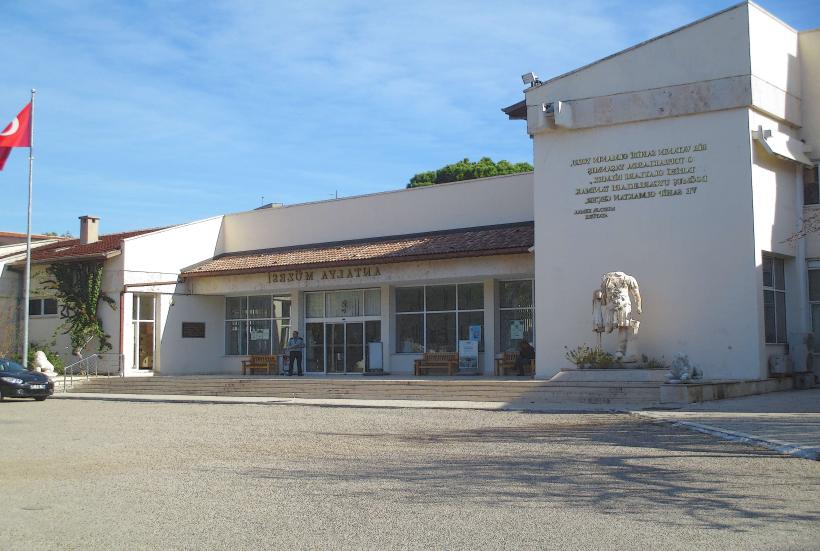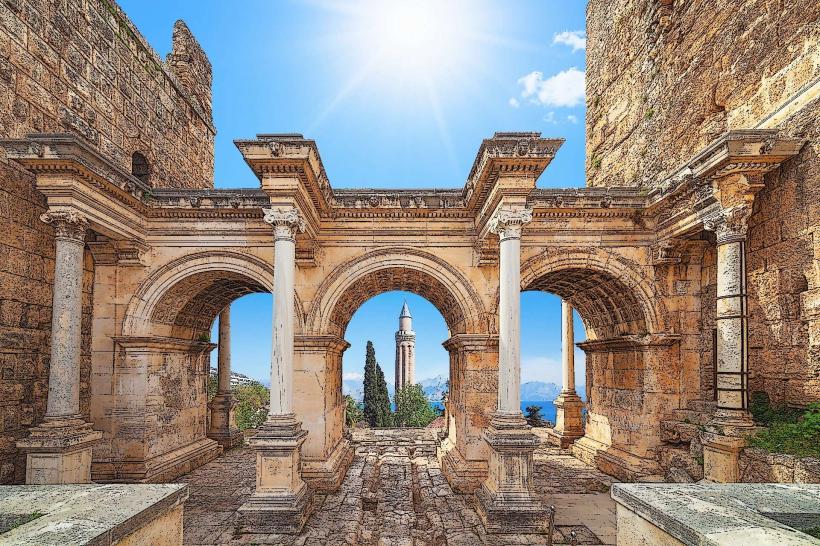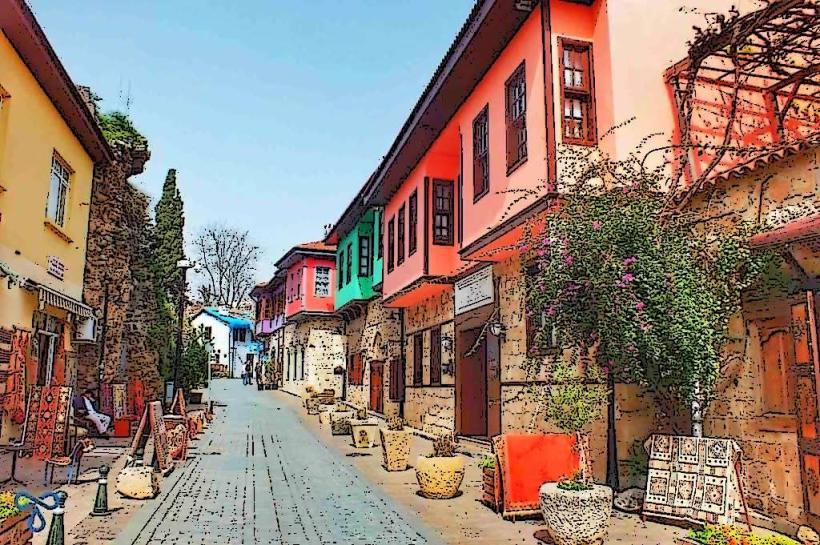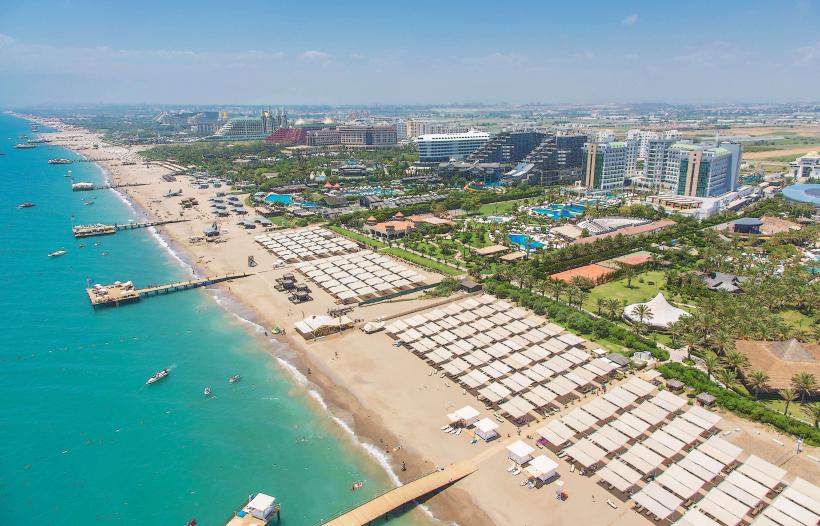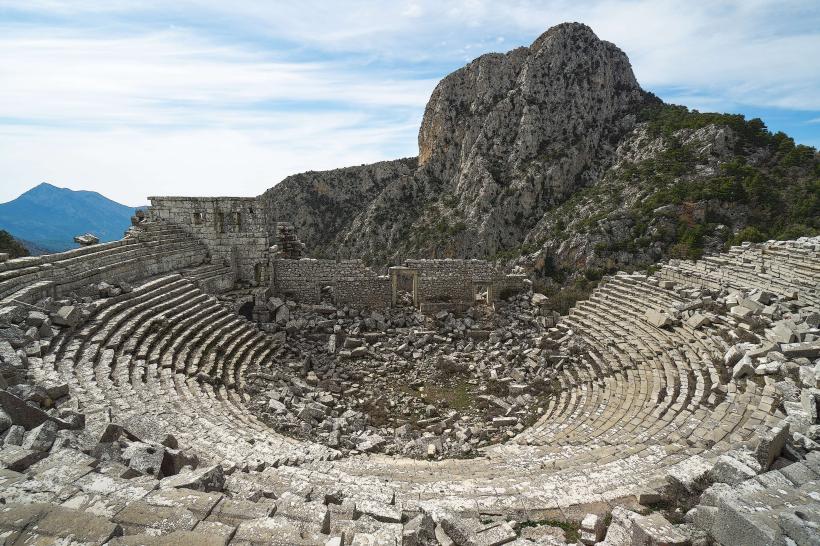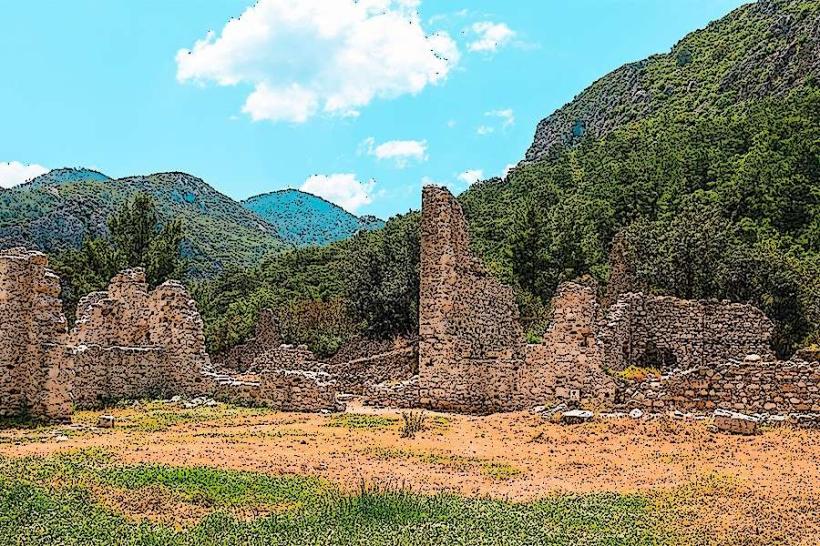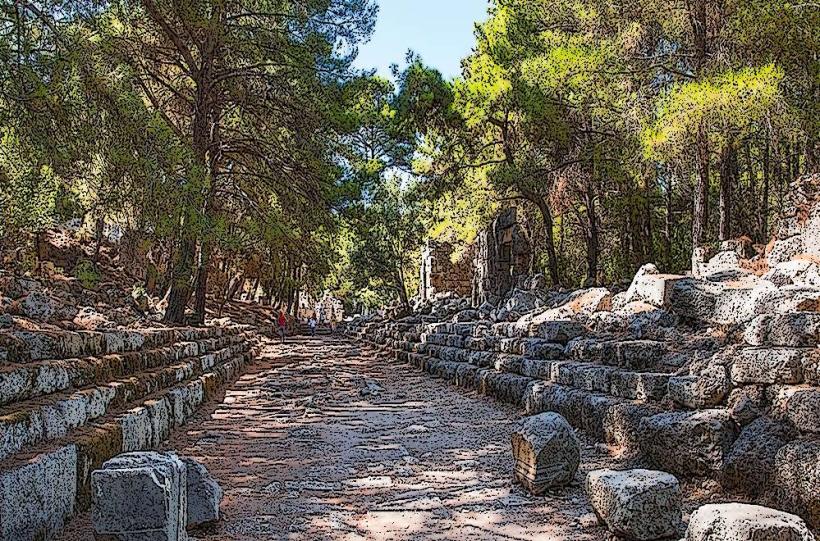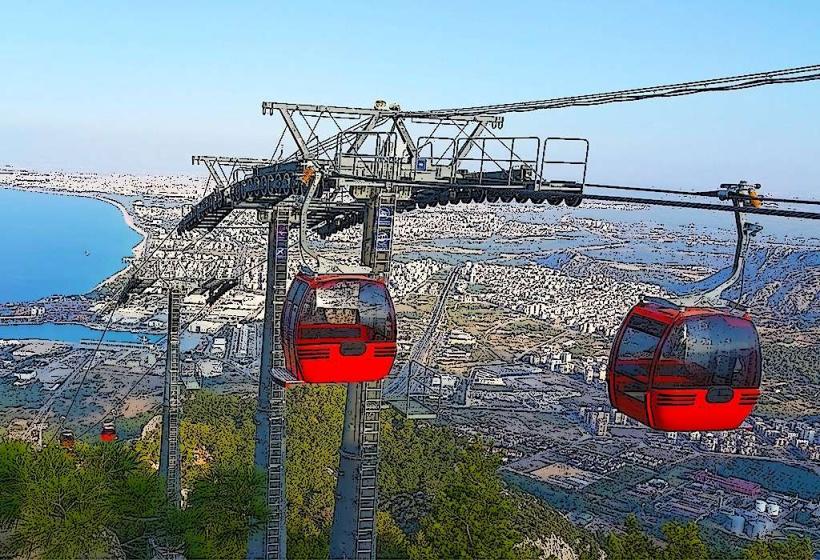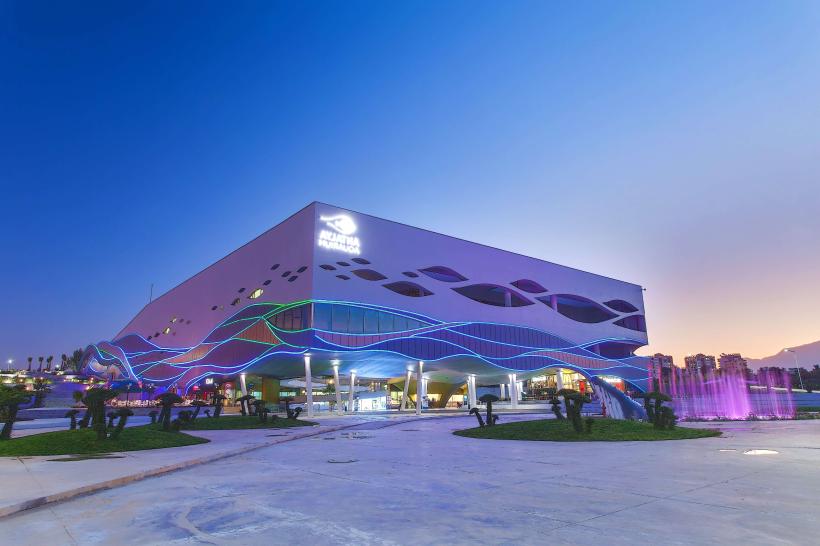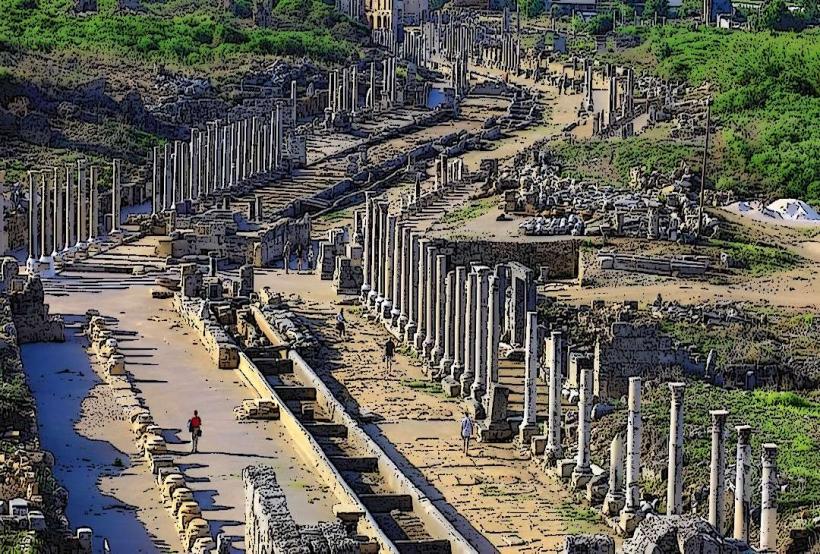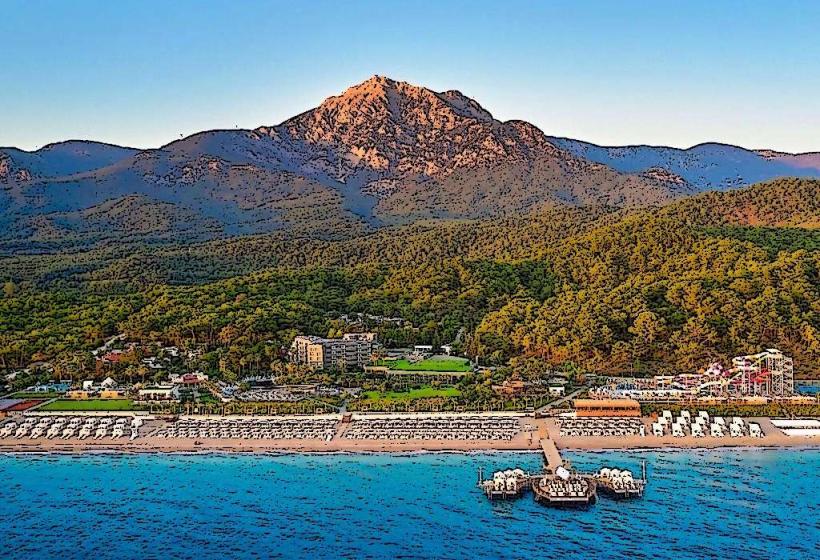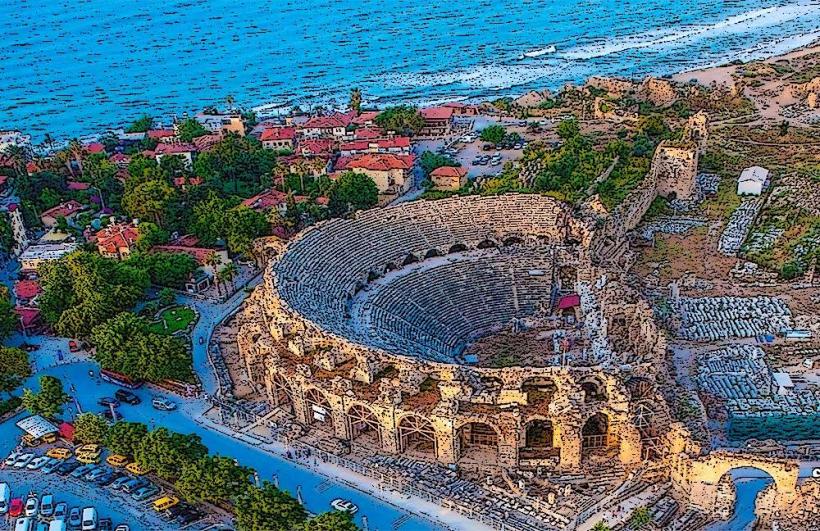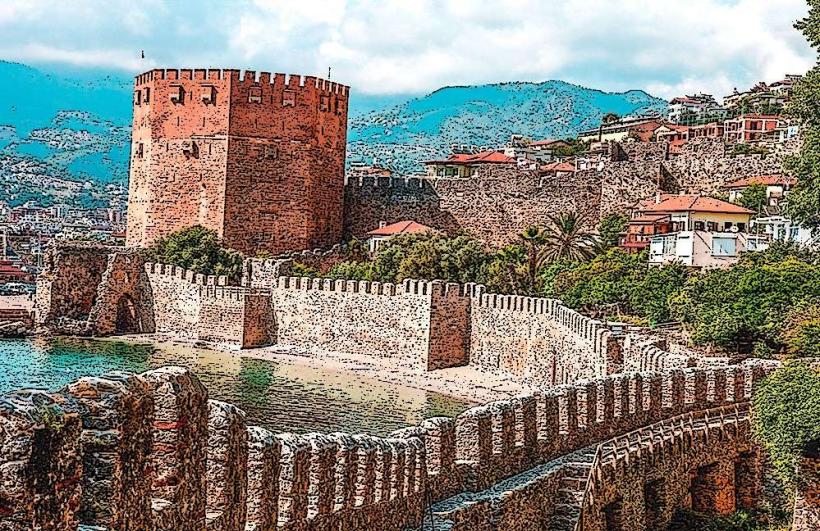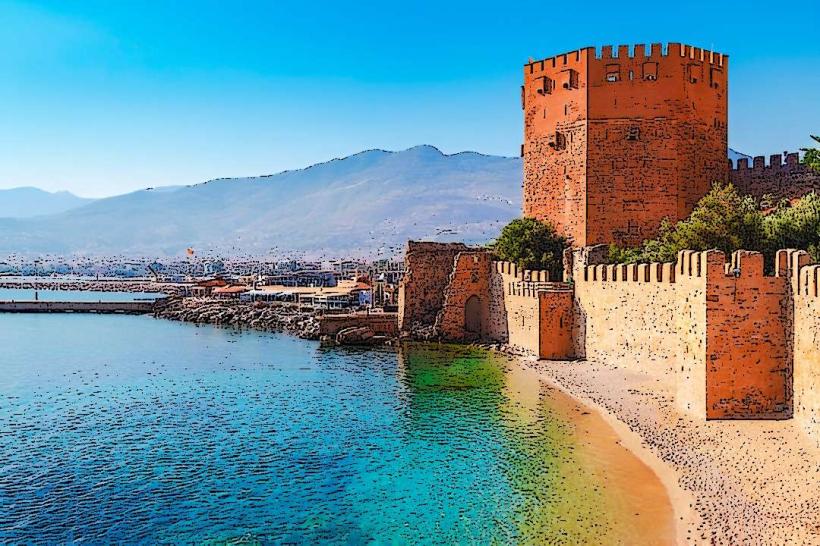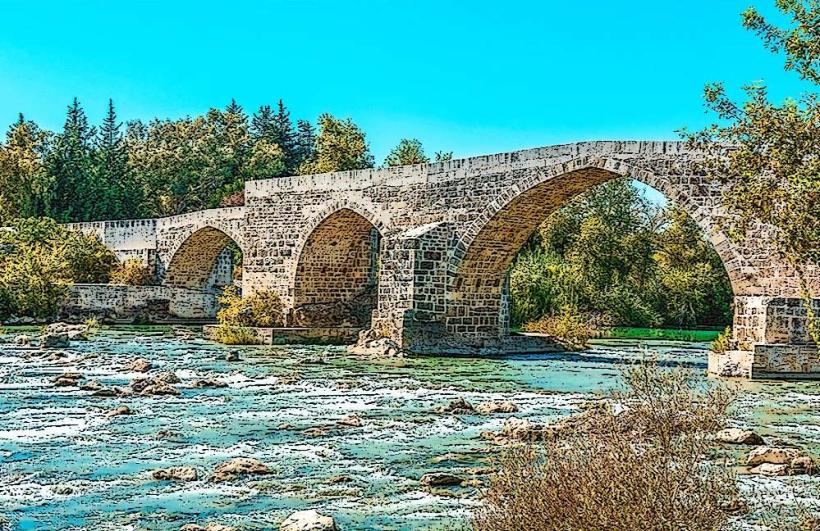Information
Landmark: Aspendos TheatreCity: Antalya
Country: Turkey
Continent: Asia
Aspendos Theatre, Antalya, Turkey, Asia
Overview
Near the modern town of Serik, about 47 kilometers (29 miles) east of Antalya in southern Turkey, the Aspendos Theatre stands as one of the best-preserved ancient Roman theatres in the world, its stone seats still warm in the afternoon sun, likewise the theatre stands in the ancient city of Aspendos, once a vital hub in Rome’s Pamphylia province where traders’ voices echoed through the stone streets.Famed for its towering stone arches and flawless acoustics, Aspendos Theatre still draws crowds as one of Turkey’s most striking and visited landmarks, not only that one standout feature of Aspendos Theatre is its remarkable Roman architecture, built under Emperor Marcus Aurelius around 155 AD, with stone seats still worn smooth by centuries of use.The architect Zenon, probably from Smyrna-today’s Izmir-designed it, shaping each line with a precise, steady hand, as a result built to seat roughly 15,000 to 20,000 people-enough to fill the air with a low roar of voices-the theatre ranked among the largest and most ornate in the ancient world.The design features a semicircular orchestra, a painted backdrop, and tiered seating divided into sections, so everyone-from the front row to the top tier-can detect the stage clearly, consequently exceptional acoustics-what truly sets the Aspendos Theatre apart is how every word carries, crisp and clear, to the very back row.The theatre’s famed acoustics carry every note and whisper so well that, even now, someone seated in the very top row can catch each word from the stage without a microphone, in turn they nailed the acoustics by focusing on every detail of the design and choosing materials that carried sound as clearly as a bell.Curved rows of seats, stone walls that bounce every note back, and the open sky above all come together to create flawless acoustics, in conjunction with the theatre’s stage, or *scenae frons*, rises in grand fashion, its marble columns cool to the touch and flanked by intricate sculptures and carved reliefs.It once stood three stories tall, but now only the sturdy lower level, with its weathered stone, is still intact, as well as the stage backdrop likely featured tall columns, carved niches, and marble statues, all flaunting the grandeur of Roman architecture.At the theater’s heart lies the orchestra area-a wide, circular stage where music once swelled, actors performed, and crowds gathered for public events, meanwhile renovations and Preservation: Unlike most ancient theatres, Aspendos has stayed remarkably intact, thanks in large part to centuries of ongoing performances that kept its stone seats warm and its walls alive with sound.During the Byzantine era, the theatre was transformed into a palace or fortress, its thick stone walls shielding it from centuries of wind and rain, also the theatre still hosts plays and festivals today, with the stage coming alive under warm summer nights.Every year, the Aspendos International Opera and Ballet Festival fills this theatre, its ancient stone walls echoing with the sweep of strings and soaring voices, in addition one reason Aspendos Theatre has stayed in such remarkable shape is that people kept using it for performances and gatherings century after century, long after the marble seats had weathered smooth.After the Roman Empire collapsed, it sat unused for years, gathering dust in the quiet air, until the Byzantines-and later the Ottomans-found novel uses for it, which kept it intact, after that even now, it’s one of the world’s best-preserved ancient theatres, its stone arches and carved seats still standing much as they did centuries ago.History and Significance: Aspendos thrived in the Greek and Roman eras, its markets bustling with goods carried in from the glittering Mediterranean just beyond its walls, at the same time the theatre first rose to life during the peak of the Roman Empire, built as a lively hub for music, drama, and art beneath the glow of oil lamps.The arena was part of the city’s public entertainment complex, built to hold thousands who came to watch gladiator fights, lively plays, or other spectacles under the open sky, besides the theatre rises as proof of the Roman Empire’s skill in both culture and architecture, its sweeping arches and tiered seats inspiring the design of countless others across the empire.At Aspendos Theatre, wander through its remarkably well-preserved stone seats, then pause to take in the sweeping view of hills and fields stretching into the distance, in conjunction with from the high stone seats, you can discover the stage clearly and take in the worn columns and sunlit ruins all around.You can meander up to the upper seating tiers, where the whole theatre spreads out below you and the rows curve away in a wide sweep, giving you a real sense of its size and grandeur, then catch a show at Aspendos Theatre, where the stone seats still echo with music and applause during live events like the renowned Aspendos International Opera and Ballet Festival, more or less If you’re in town during summer, don’t miss one of these performances-you might catch the warm night air buzzing with music, alternatively with its rich, echoing acoustics and a backdrop that glows at sunset, the theatre turns every cultural event into something unforgettable, a locale where performances feel alive.Snap the scene: Aspendos Theatre brims with photo-worthy moments-from the sweep of its stone arches and the delicate carvings along ancient walls to the wide, sunlit hills rolling away in the distance, as a result that soft golden light at sunrise or sunset is perfect for photographing the theatre, especially when its stone glows warm and rich.In a way, Ancient theatre stones rise against the sweep of wild hills, and the clash between them creates striking, unforgettable images, meanwhile take a stroll through the surrounding archaeological site-the theatre draws the most attention, but crumbling columns and weathered stone walls wait just a few steps away.You can wander through the ruins of the Agora, the baths, and the stadium, catching glimpses of how the people of ancient Aspendos once bargained, bathed, and cheered from stone seats, on top of that another highlight of the site is its ancient aqueducts, which once carried cool, clear water straight into the heart of the city.The ideal time to behold Aspendos Theatre is in spring, from April to June, or in autumn, from September to November, when the air feels warm but not stifling and the crowds have thinned, equally important summer afternoons can scorch, the air shimmering over the pavement, so if you’re visiting then, head out early or wait until evening to dodge the heat.If you want to catch a festival or performance, plan your trip for summer-June or July is best-when the theatre comes alive with music and voices carrying through the warm evening air, while getting to Aspendos Theatre is simple-it sits about 47 kilometers east of Antalya, a straight drive past groves of olive trees, whether you’re behind the wheel or on a guided tour.It’s about a 45-minute to one-hour drive from Antalya, and clear signs point the way, some painted dazzling yellow so they’re hard to miss, alternatively public transport can be scarce, but plenty of tours swing by Aspendos as part of a Cappadocia, Pamphylia, or Antalya trip.In conclusion, Aspendos Theatre stands as a remarkable showcase of Roman engineering and design, its stone arches still echoing with traces of ancient voices, not only that with its remarkably preserved stone seats, breathtaking acoustics, and rich history, it’s a location no lover of ancient history, theatre, or architecture should miss.Whether you’re staring up at its towering arches or catching the hush before a live performance begins,
Author: Tourist Landmarks
Date: 2025-09-22

